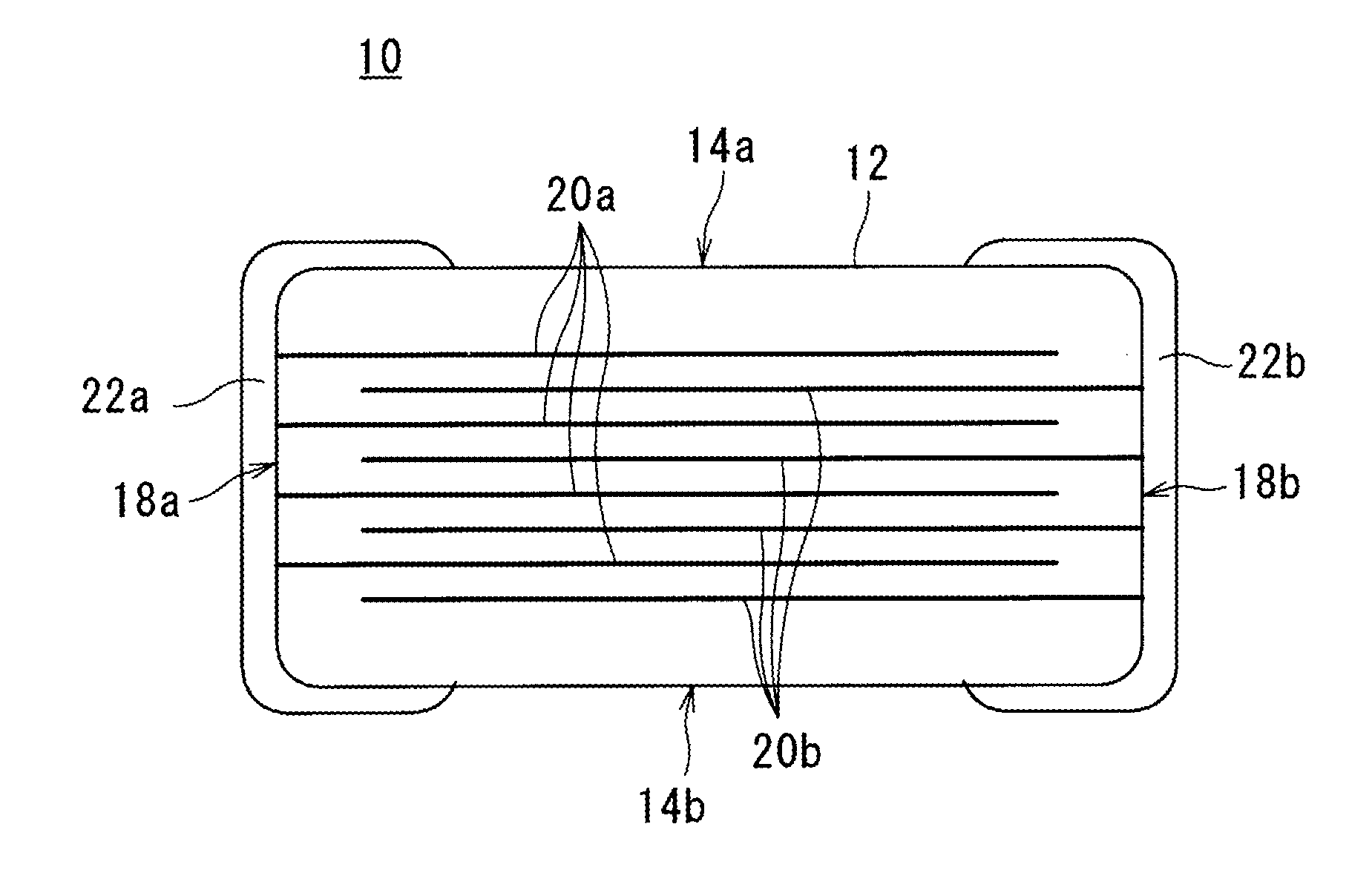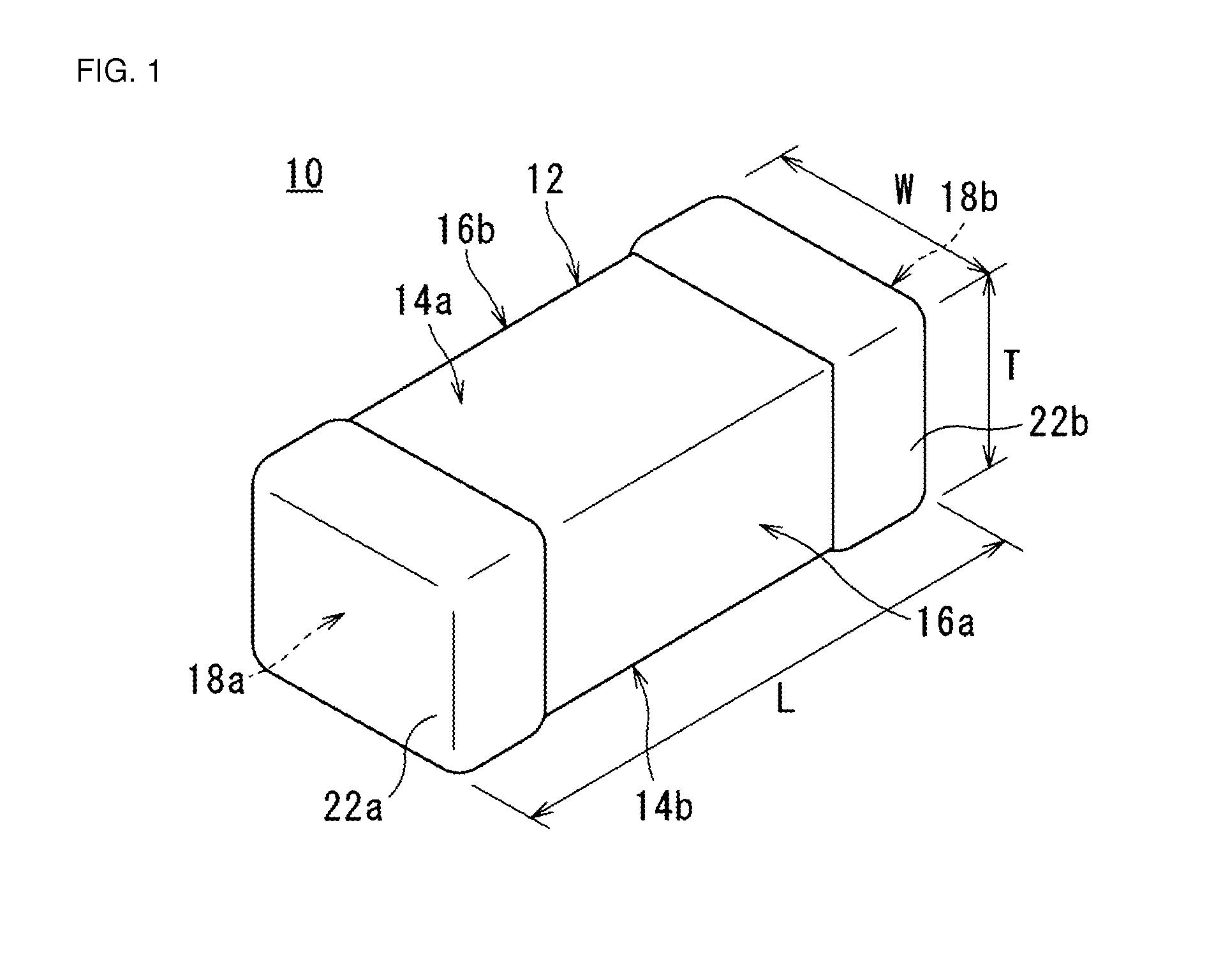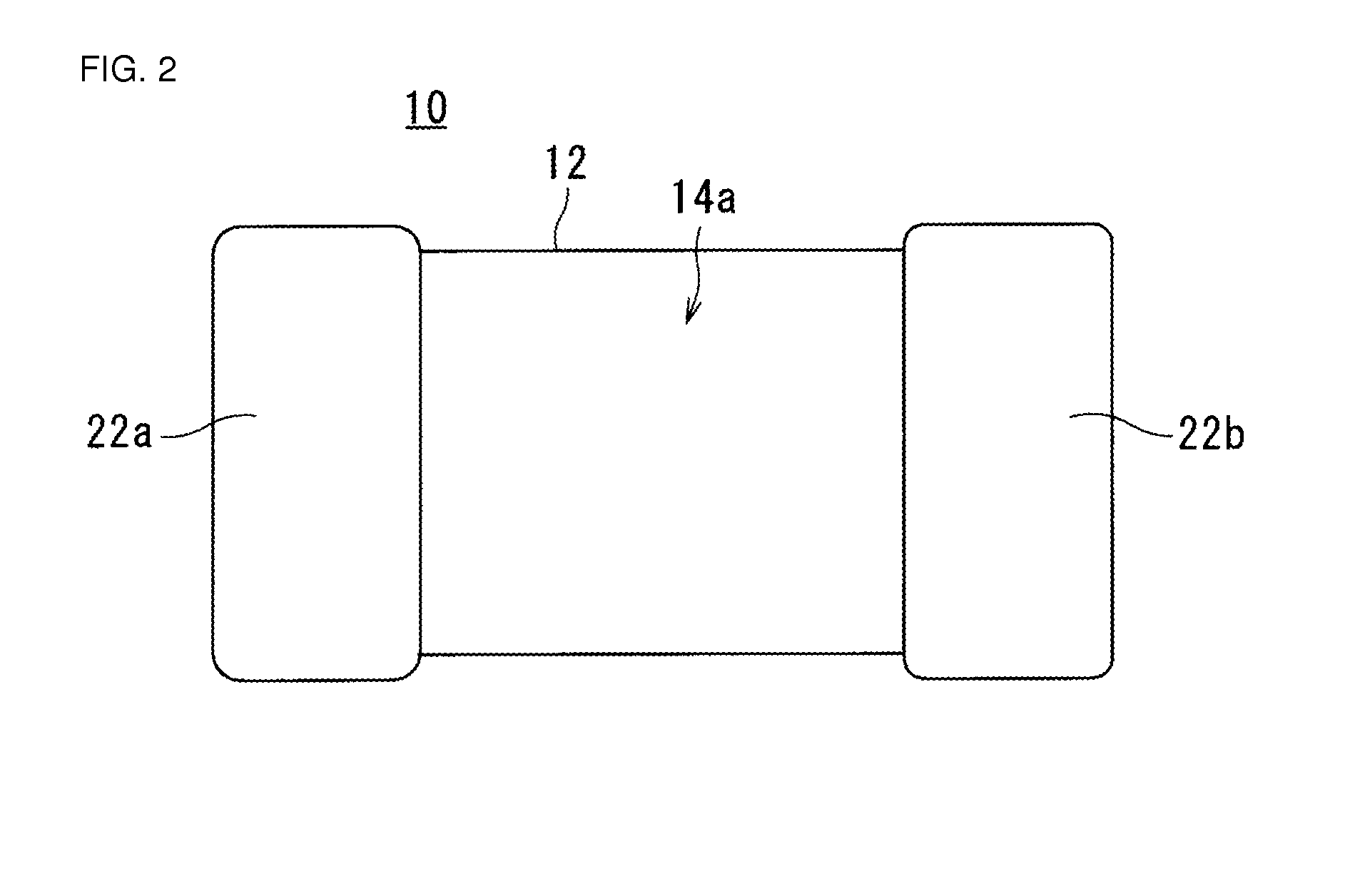Monolithic ceramic electronic component
a technology of electronic components and monolithic ceramics, applied in the direction of fixed capacitor details, generators/motors, fixed capacitors, etc., can solve the problems of easy short circuit failure, short circuit failure, short circuit failure, etc., and achieve the effect of significantly reducing or preventing short circuit failures, and increasing thickness
- Summary
- Abstract
- Description
- Claims
- Application Information
AI Technical Summary
Benefits of technology
Problems solved by technology
Method used
Image
Examples
examples
[0051]An example of a ceramic body for a monolithic ceramic capacitor was prepared. This ceramic body included ceramic layers formed of BaTiO3 and inner electrodes formed of Ni and had chip dimensions (L×W×T) of approximately 1.0 mm×0.5 mm×0.5 mm. Lower electrode layers were formed of Cu and had a thickness of about 30 μm on the central portions of the end surfaces of the ceramic body and had a thickness of about 5 μm on the main surfaces and the side surfaces of the ceramic body. Intermediate electrode layers had a thickness of about 5 μm on the central portions of the end surfaces of the ceramic body. Upper electrode layers had a thickness of about 0.1 μm on the central portions of the end surfaces of the ceramic body and had a thickness of about 0.1 μm on the main surfaces and the side surfaces of the ceramic body. The intermediate electrode layers were formed as Ni plating layers by Ni plating in Watts bath with about 0.5-mm-diameter media for approximately 60 minutes. The other...
PUM
| Property | Measurement | Unit |
|---|---|---|
| distance | aaaaa | aaaaa |
| temperature | aaaaa | aaaaa |
| distance | aaaaa | aaaaa |
Abstract
Description
Claims
Application Information
 Login to View More
Login to View More - R&D
- Intellectual Property
- Life Sciences
- Materials
- Tech Scout
- Unparalleled Data Quality
- Higher Quality Content
- 60% Fewer Hallucinations
Browse by: Latest US Patents, China's latest patents, Technical Efficacy Thesaurus, Application Domain, Technology Topic, Popular Technical Reports.
© 2025 PatSnap. All rights reserved.Legal|Privacy policy|Modern Slavery Act Transparency Statement|Sitemap|About US| Contact US: help@patsnap.com



